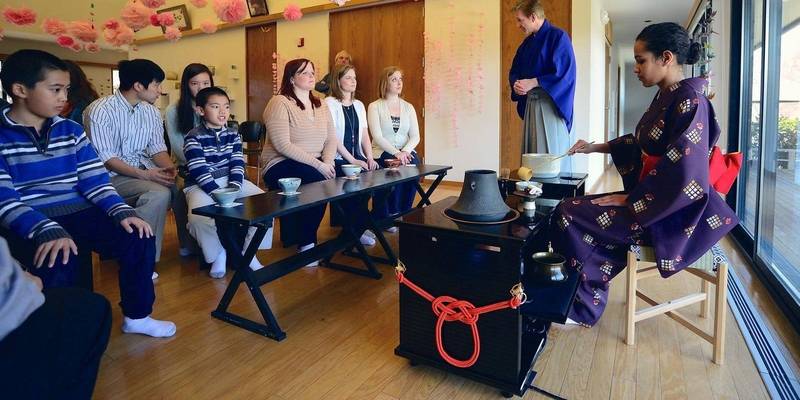Recently Japan House has added a different type of tea ceremony to their regular rotation, a Ryūrei, or traditional table-style ceremony. Rather than guests sitting in a kneeling position, they sit at tables. It was developed in the 1800s to accomodate Western visitors to Japan. For community members who have trouble sitting in the traditional “seiza posture” this is an accessible way to experience the Way of Tea at Japan House. The next opportunity is Thursday, December 13th from 3 to 4 p.m. You can make reservations and find out what to expect here. Here’s the full explanation and history of Ryūrei, from the Facebook event page:
Chado, or the Way of Tea, is one of the most ancient and revered arts of Japan, and is at the very heart of Japan House. There are many different variations of this art form. Traditionally, guests sit in the seiza posture (kneeling with the tops of the feet flat on the floor and sitting on the soles). But there is a variety of tea ceremony in which one sits on a chair while drinking the tea. This is called the Ryūrei style.
Historically, in Japan, people didn’t use chairs. They sat on the floor to eat meals. In contrast, people in the West sit on chairs at a table to eat meals. Ryūrei was created as a way of making tea ceremony more accessible to Westerners. Even Japanese people, who use the seiza posture much less than in the past, embrace the Ryūrei style of tea ceremony because it places less of a burden on the legs.
The Ryūrei style of tea ceremony was created by Gengensai Seichū (1810-1877), the 11th head of the Urasenke school of tea ceremony, for an exposition held in 1872 in Kyoto. Many foreigners visited Japan at this time, so the government requested that an effort be made to accommodate them by modifying the traditional form of tea ceremony.
The main feature of Ryūrei style is that both host and guests sit on a chair. The seiza posture is no longer used, but utensils are used in the same way as in a normal tea ceremony. Although this one aspect of the ceremony is altered, the Ryūrei style is otherwise the same as a tea ceremony performed using the seiza posture.
Photo from Facebook








